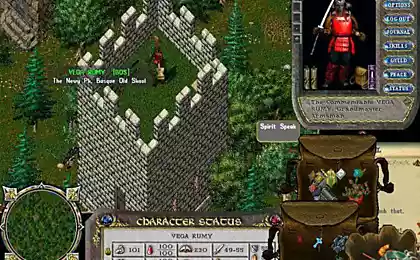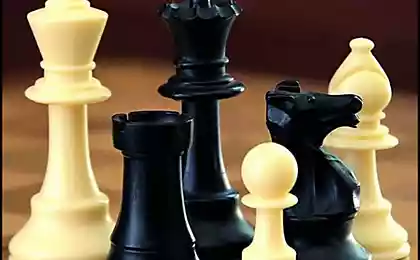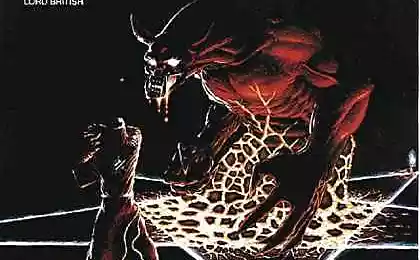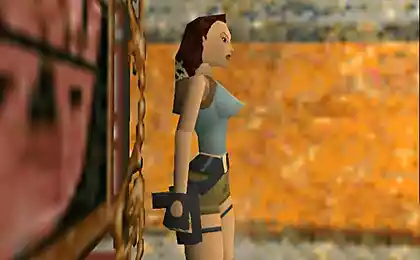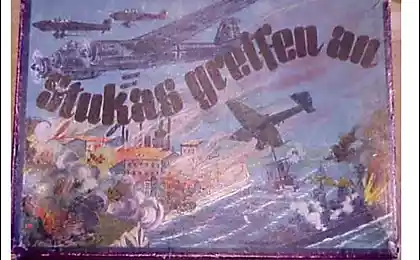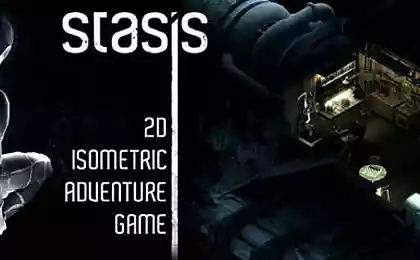865
Xiangqi: Chinese chess game type
If you decide to visit China, and look at the lives of ordinary Chinese people, then you definitely will fall is such a picture.

Men enthusiastically playing a board game and looks like ... Checkers. Yes, yes it is checkers, but you're wrong, this game of chess type. Before us is a classic confrontation between the two armies of the figures of different ranks.
Many European researchers call this game Chinese chess, which in my opinion is not entirely true. It - Xiangqi Chinese chess game, which has a long history and a unique identity
. Western scholars usually considered xiangqi as one of the branches of a class of games, which is the root of shaturanga (chaturanga). According to this version, it is believed that shaturanga (chaturanga) - the common ancestor of all currently known types of chess games. Moving westward, shaturanga (chaturanga) spawned Arabic shatranj, who became the ancestor of the modern classical chess. Spreading to the East and once in China, shaturanga (chaturanga), and perhaps even longer shatranj, were modified in accordance with Chinese tradition and turned into xiangqi.
This is how the origin and purpose of the game Robert Bell in his book: "shatranj in a new form has undergone significant changes, and has elephants, horsemen, foot soldiers, cannon with chariots fought to capture the enemy general. Each army possessed a fortress sitting in which the general and his mandarins hatched their plans. To win the party had to storm the fortress of the enemy. Between the two armies of a river, which tyazhelogruzhennye elephants could not overcome. Other minor pieces freely crossed it. »
Chinese researchers have categorically do not agree with the theory of the origin of shaturangi Xiangqi (Chaturanga). Based on the documents, the oldest of which date from the Han era, they argue that the game, which became the ancestor of Xiangqi, appeared in ancient China around 3,500 years ago and originally called FOR ANY. In this game also moved the chips on the board, among which were the pawns and the general, having different rules for progress, but to determine the course of dice used, thus introducing an element of randomness to the game. Just like progenitor shaturangi (Chaturanga) was a game TAAYAM. Later, the bones have refused, having received the game GEUILI SAYCHZHAN.
In the era of the Tang rules of the game have been modified, and a variety of shapes increased, which led to the emergence of the rules of Xiangqi, close to modern. It certainly proved that in VIII century in China xiangqi existed, they played with two players, the bones are no longer used, and the figures set of matched set shaturangi figures (Chaturanga) - General (King), horse, elephant, chariot (rook) and soldiers (pawns).
So look at the game itself.
Board for playing Xiangqi consists of two halves with squares 8 to 4, which are separated by a space width of one square, known as the river (or pond). Each half of the board is four squares marked diagonals, thus formed a square of nine points is a CASTLE (CASTLE). With the game pieces are placed at the intersections of the lines, but not in themselves squares. Therefore, the board is considered as one large space of the points of 9 to 10.

The classic game pieces are circular discs of equal size. On the upper side of the figure is written, its value. Usually labels are made red and green (sometimes black) color. When writing the equivalent figures using different Chinese characters denoting them, so for example if on some figures, inscriptions were in English, but on the other - in German.
On the game board in xiangqi presented the following figures (subject to the rules of their movement during the stroke):
GENERAL for the "green" ( "black") / Marshal for the Reds - a figure similar to chess king, his loss means losing a player in the game. It can move to a single point in a vertical or horizontal direction, but their movements restricted by nine points his fortress (castle). The generals can not look to face each other (when the vertical line between them is not the figures), in this case in response to the move, release the line, the general can attack across the field and kill the enemy general to its "eyes" (very funny rule with oriental flavor, immediately come to mind images of Chinese historical films with piercing glances of actors playing the role of what some generals).
GOVERNOR for "green" ( "black") / Mandarin for the Reds - a figure can be moved to a single point on the diagonal, but they are also limited in their actions outside the fortress, ie, five points, highlighted by thick lines.
ELEPHANT for "green" ( "black") / Minister for the red - figure can move diagonally only one the next point but this figure could not cross the river (pond) and invade enemy territory
. RIDER / HORSE - a figure can be moved to a point vertically or horizontally and then moving to the point diagonally. Unlike chess knight, horse xiangqi a conventional linear figure - at a course he did not "jump" from the starting point to the destination, but moved to the plane of the board, first horizontally or vertically, then diagonally. If an intermediate point the horse is running its own figure, or a figure of the enemy, it is the appropriate course of blocks.
CHARIOT / BOAT - analogue chess rook can move any distance vertically or horizontally
. Catapult for "green" ( "black") / GUN for the Reds - can walk like a chess rook. It captures opponent's pieces only if between it and the figure will be attacked any third figure called screen.
WARRIOR / walk - in their half of the board can only walk upright on one point ahead in enemy territory can move one point ahead or sideways. Upon reaching the opponent's back line, can be moved only horizontally. Converting ability in the other figures, as in chess is not.
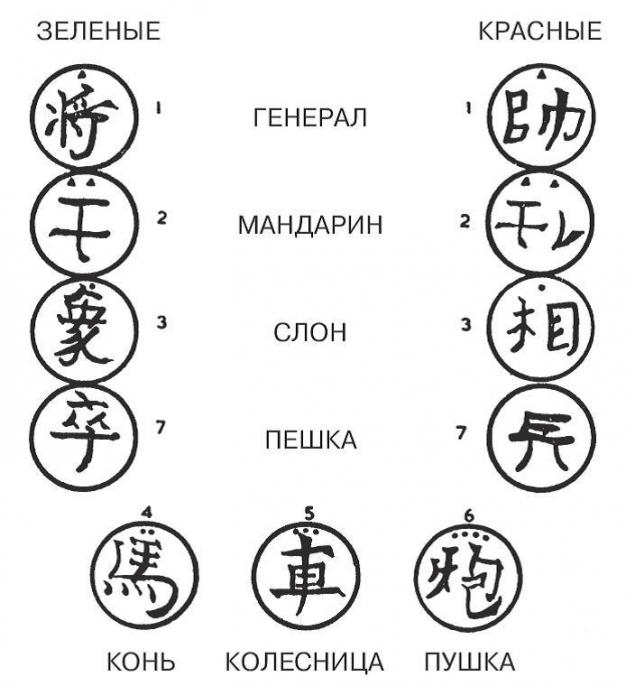
The goal - to declare MAT enemy general or to achieve a stalemate. The player can not give a perpetual check, it should vary your moves.
The general is in check for the following conditions:
- Being attacked by any figure, it can be captured on the next course, if you do not take measures to repel an attack on it;
- When the generals opposed to each other on the same vertical, and between them there is no figure (the same piercing eyes)
. At the announcement of General Shah three possible answers:
- Attack of the general figure can be taken by an enemy piece;
- General may take out of check;
- Max can be averted by using 'specific' rules stroke figures (for example, to add / remove the screen in front of the gun, parry / block the rider)
. Unfortunately in our country and in Europe xiangqi could not achieve great popularity, although it is the most popular game in China (the game is practically in every home). But that there are objective reasons:
First, to understand the figures themselves must be at least at the primary level to understand Chinese characters and to be able to read the symbols marked on them.
Secondly, there is practically no translated professional literature on the subject (diverse articles, including this one) do not give a complete penetration into the world of this fascinating game.
Who done a lot to popularize the game, for example you can buy a set here with figures close to chess.
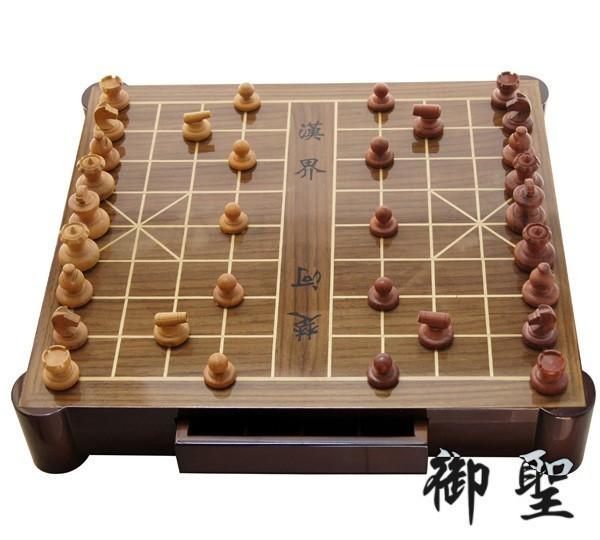
Or here's a souvenir set of game Xiangqi in ethnic style
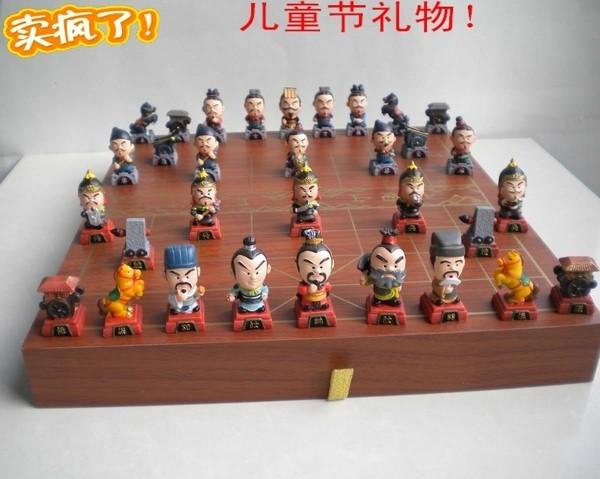
Before writing this article personally "peresherstil" open spaces of different stores and I found some great simulation game of Xiangqi for IOS and Android, to get an idea about it.
For fun and invite you to enter in a search engine «xianqi», «xianci» or «xiangqi" to try yourself in this game.
Hopefully, given the increasing interaction between Russia and China, in Russian will start to appear more literature, not only in the history of this game, but with the explanation of the rules and examples parties.
Source: geektimes.ru/post/270688/

Men enthusiastically playing a board game and looks like ... Checkers. Yes, yes it is checkers, but you're wrong, this game of chess type. Before us is a classic confrontation between the two armies of the figures of different ranks.
Many European researchers call this game Chinese chess, which in my opinion is not entirely true. It - Xiangqi Chinese chess game, which has a long history and a unique identity
. Western scholars usually considered xiangqi as one of the branches of a class of games, which is the root of shaturanga (chaturanga). According to this version, it is believed that shaturanga (chaturanga) - the common ancestor of all currently known types of chess games. Moving westward, shaturanga (chaturanga) spawned Arabic shatranj, who became the ancestor of the modern classical chess. Spreading to the East and once in China, shaturanga (chaturanga), and perhaps even longer shatranj, were modified in accordance with Chinese tradition and turned into xiangqi.
This is how the origin and purpose of the game Robert Bell in his book: "shatranj in a new form has undergone significant changes, and has elephants, horsemen, foot soldiers, cannon with chariots fought to capture the enemy general. Each army possessed a fortress sitting in which the general and his mandarins hatched their plans. To win the party had to storm the fortress of the enemy. Between the two armies of a river, which tyazhelogruzhennye elephants could not overcome. Other minor pieces freely crossed it. »
Chinese researchers have categorically do not agree with the theory of the origin of shaturangi Xiangqi (Chaturanga). Based on the documents, the oldest of which date from the Han era, they argue that the game, which became the ancestor of Xiangqi, appeared in ancient China around 3,500 years ago and originally called FOR ANY. In this game also moved the chips on the board, among which were the pawns and the general, having different rules for progress, but to determine the course of dice used, thus introducing an element of randomness to the game. Just like progenitor shaturangi (Chaturanga) was a game TAAYAM. Later, the bones have refused, having received the game GEUILI SAYCHZHAN.
In the era of the Tang rules of the game have been modified, and a variety of shapes increased, which led to the emergence of the rules of Xiangqi, close to modern. It certainly proved that in VIII century in China xiangqi existed, they played with two players, the bones are no longer used, and the figures set of matched set shaturangi figures (Chaturanga) - General (King), horse, elephant, chariot (rook) and soldiers (pawns).
So look at the game itself.
Board for playing Xiangqi consists of two halves with squares 8 to 4, which are separated by a space width of one square, known as the river (or pond). Each half of the board is four squares marked diagonals, thus formed a square of nine points is a CASTLE (CASTLE). With the game pieces are placed at the intersections of the lines, but not in themselves squares. Therefore, the board is considered as one large space of the points of 9 to 10.

The classic game pieces are circular discs of equal size. On the upper side of the figure is written, its value. Usually labels are made red and green (sometimes black) color. When writing the equivalent figures using different Chinese characters denoting them, so for example if on some figures, inscriptions were in English, but on the other - in German.
On the game board in xiangqi presented the following figures (subject to the rules of their movement during the stroke):
GENERAL for the "green" ( "black") / Marshal for the Reds - a figure similar to chess king, his loss means losing a player in the game. It can move to a single point in a vertical or horizontal direction, but their movements restricted by nine points his fortress (castle). The generals can not look to face each other (when the vertical line between them is not the figures), in this case in response to the move, release the line, the general can attack across the field and kill the enemy general to its "eyes" (very funny rule with oriental flavor, immediately come to mind images of Chinese historical films with piercing glances of actors playing the role of what some generals).
GOVERNOR for "green" ( "black") / Mandarin for the Reds - a figure can be moved to a single point on the diagonal, but they are also limited in their actions outside the fortress, ie, five points, highlighted by thick lines.
ELEPHANT for "green" ( "black") / Minister for the red - figure can move diagonally only one the next point but this figure could not cross the river (pond) and invade enemy territory
. RIDER / HORSE - a figure can be moved to a point vertically or horizontally and then moving to the point diagonally. Unlike chess knight, horse xiangqi a conventional linear figure - at a course he did not "jump" from the starting point to the destination, but moved to the plane of the board, first horizontally or vertically, then diagonally. If an intermediate point the horse is running its own figure, or a figure of the enemy, it is the appropriate course of blocks.
CHARIOT / BOAT - analogue chess rook can move any distance vertically or horizontally
. Catapult for "green" ( "black") / GUN for the Reds - can walk like a chess rook. It captures opponent's pieces only if between it and the figure will be attacked any third figure called screen.
WARRIOR / walk - in their half of the board can only walk upright on one point ahead in enemy territory can move one point ahead or sideways. Upon reaching the opponent's back line, can be moved only horizontally. Converting ability in the other figures, as in chess is not.

The goal - to declare MAT enemy general or to achieve a stalemate. The player can not give a perpetual check, it should vary your moves.
The general is in check for the following conditions:
- Being attacked by any figure, it can be captured on the next course, if you do not take measures to repel an attack on it;
- When the generals opposed to each other on the same vertical, and between them there is no figure (the same piercing eyes)
. At the announcement of General Shah three possible answers:
- Attack of the general figure can be taken by an enemy piece;
- General may take out of check;
- Max can be averted by using 'specific' rules stroke figures (for example, to add / remove the screen in front of the gun, parry / block the rider)
. Unfortunately in our country and in Europe xiangqi could not achieve great popularity, although it is the most popular game in China (the game is practically in every home). But that there are objective reasons:
First, to understand the figures themselves must be at least at the primary level to understand Chinese characters and to be able to read the symbols marked on them.
Secondly, there is practically no translated professional literature on the subject (diverse articles, including this one) do not give a complete penetration into the world of this fascinating game.
Who done a lot to popularize the game, for example you can buy a set here with figures close to chess.

Or here's a souvenir set of game Xiangqi in ethnic style

Before writing this article personally "peresherstil" open spaces of different stores and I found some great simulation game of Xiangqi for IOS and Android, to get an idea about it.
For fun and invite you to enter in a search engine «xianqi», «xianci» or «xiangqi" to try yourself in this game.
Hopefully, given the increasing interaction between Russia and China, in Russian will start to appear more literature, not only in the history of this game, but with the explanation of the rules and examples parties.
Source: geektimes.ru/post/270688/
Chinese turn for half an hour the 16-gigabyte iPhone into a 128-gigabyte
Vadim Zeland Step 6 Actor reality Psychology Audiobook
